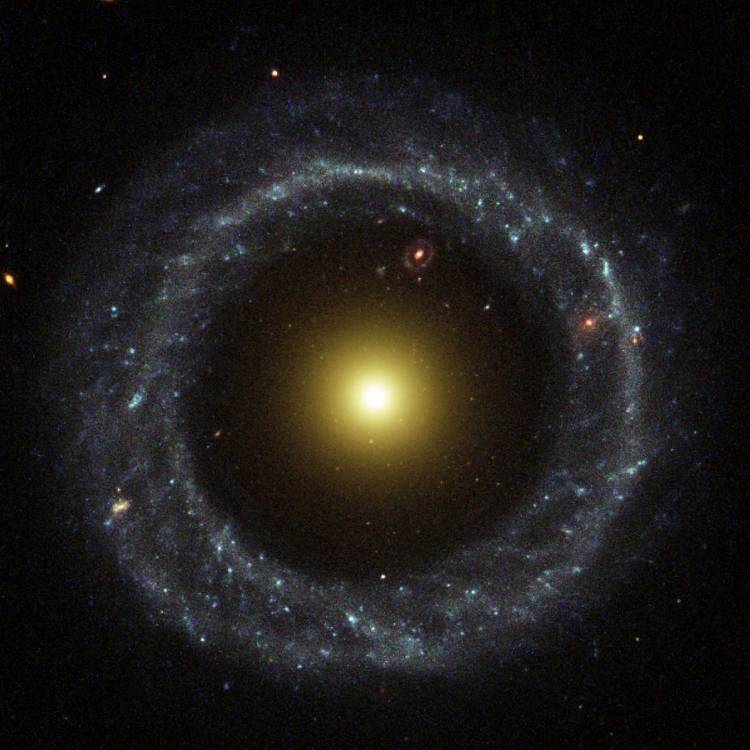Hoags Object
This unusual galaxy was discovered in 1950 by astronomer Art Hoag, and is located approximately 183 Mpc (about 600 million light-years) away. It is an almost perfect ring of hot, blue stars surrounding the yellow nucleus of an unusual galaxy known as Hoag's Object. The galaxy is about 120,000 light-years wide across the outer limits of the ring, slightly larger than our Milky Way Galaxy. The blue ring, which is dominated by clusters of young, massive stars, contrasts sharply with the yellow nucleus of mostly older stars. What appears to be a "gap" separating the two stellar populations may actually contain some star clusters that are almost too faint to see. Curiously, an object that bears an uncanny resemblance to Hoag's Object can be seen in the gap at the one o'clock position. The object is probably another ring galaxy in the background.
Ring-shaped galaxies can form in several different ways. One possible scenario is through a collision with another galaxy. Sometimes the second galaxy speeds through the first, leaving a "splash" of star formation. But in Hoag's Object there is no sign of the second galaxy, which leads to the suspicion that the blue ring of stars may be the shredded remains of a galaxy that passed nearby. Some astronomers estimate that the encounter occurred about 2 to 3 billion years ago.
Ring-shaped galaxies can form in several different ways. One possible scenario is through a collision with another galaxy. Sometimes the second galaxy speeds through the first, leaving a "splash" of star formation. But in Hoag's Object there is no sign of the second galaxy, which leads to the suspicion that the blue ring of stars may be the shredded remains of a galaxy that passed nearby. Some astronomers estimate that the encounter occurred about 2 to 3 billion years ago.
Hubble took this image on July 9, 2001. Credit: NASA and The Hubble Heritage Team (STScI/AURA), Ray A. Lucas (STScI/AURA)
